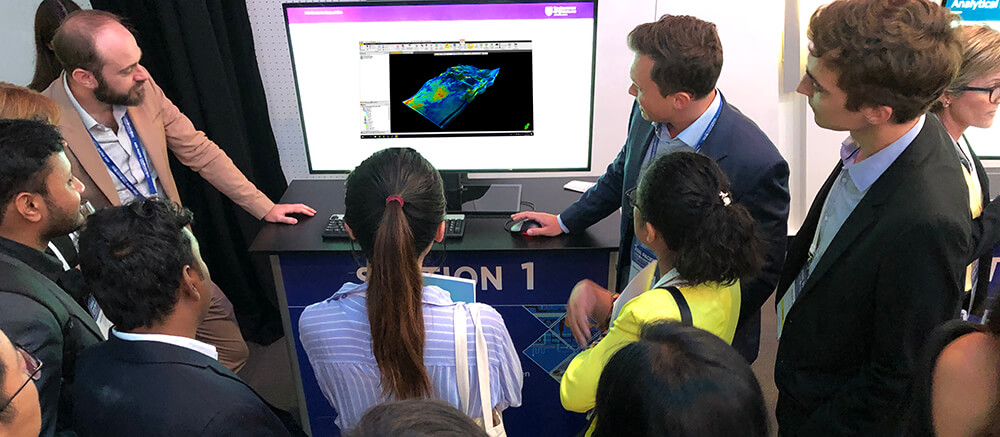
Petrel Plug-in development: Physical and chemical properties of rocks and rock fluids (non-linear geostatistics using copulas)
This project is building an important new modelling tool (Petrel-plug in) to make non-linear geostatistics (spatial copulas) available to the coal seam gas (CSG) industry and other potential users.
The plug-in makes the innovative new “research code” developed by the UQ Centre for Natural Gas in the first phase of the project more broadly available for use by industry professionals, by integrating it with widely-used modelling package (Petrel). The initial research project assessed how copulas (a non-linear, multivariate statistical technique) can be applied to improve spatial estimation of petrophysical parameters for petroleum reservoirs and aquifers and identified opportunities to tailor these techniques for unconventional resource development.
Petrophysicists use information about the physical and chemical properties of rocks and rock fluids to develop an understanding of where hydrocarbons and aquifers occur in the subsurface and the way fluids (oil, gas and water) flow through the subsurface system. Reservoir modelling, one of the main techniques used in the identification and evaluation of hydrocarbon reservoirs such as coal seam gas reserves, relies on using geostatistical techniques to estimate the distribution of these properties over large areas. Current techniques, which rely on linear relationships between variables, are limited in their ability to represent the variation that occurs in subsurface conditions and this affects the accuracy of the resulting estimates.
Phase 1 of the project assessed how copulas (a non-linear, multivariate statistical technique) can be applied to improve spatial estimation of petrophysical parameters for petroleum reservoirs and aquifers and identified opportunities to tailor these techniques for unconventional resource development. The potential for development of commercial software was assessed.
Phase 2 of this project is underway, building a plug-in for the widely used Petrel modelling software. The success of the plug-in hinges on it being built on efficient code, quality assured, and tested and demonstrated on real data. It is also important that the code is almost platform independent. To make the plug-in broadly available to the CSG industry and other potential users (academic, government), it is intended to make it available through the existing open Schlumberger commercialisation pathway.
PROJECT OUTPUTS
- Software product: A trial version of the UQ Copula Plug-In for Petrel is now available - UQ is inviting applications to trial the plug-in.
- Research poster: Impact of Geostatistical Techniques on Resource Volume and Flow, Centre Annual Review (2019)
- Research poster: Non-linear geostatistics, Centre Annual Review (2015)
- Review: Literature review regarding current utilisation of copula-based geostatisics in geoscience and environmental applications.
- Report: Report on capability assessment and commercial feasibility.
|
|
